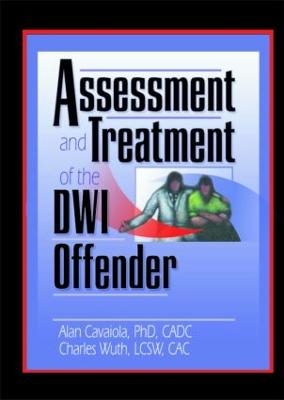
Assessment and Treatment of the DWI Offender
Routledge (Verlag)
978-0-7890-0870-1 (ISBN)
the important variables that separate DWI offenders from alcoholics in general, as well as the “normal” population
patterns of drinking behavior among offenders
the magnitude of the DWI problem in the United States
the history of the DWI countermeasures movement
prevention and public education organizations such as SADD, MADD, the Partners in Progress program, the College Binge Drinking Initiative, and more
enforcement techniques like breath testing, standardized field sobriety tests, on-site drug detection devices, etc.
problems with the tools and techniques that are currently being used to address this issue
interviewing techniques that work with DWI offenders
more!
Intended primarily for counselors, social workers, psychologists, and other professionals who work with DWI offenders and packed with helpful and easy-to-read statistical charts and tables, this book is also essential for graduate students in psychology, social work, chemical dependency, or any of the helping professions.
Charles Wuth, Alan A Cavaiola
Contents
Foreword
Acknowledgments
Chapter 1. Drinking and Driving in the United States: The Scope of the Problem
Introduction
History of the DWI Countermeasures Movement
Overview of the Scope of the Problem
Characteristics of the Problem
The Countermeasure Initiatives and Their Impact
Summary
Chapter 2. Psychological Characteristics of DWI Offenders
Who Are the DWI Offenders?
Personality Characteristics
Psychiatric Correlates
Summary and Conclusions
Chapter 3. Profile Differences Between DWI Offenders and Alcoholics, and Other Demographic Variables
Demographic Variables
Drinking Behavior Among DWI Offenders
Drug Use Among DWI Offenders
Estimates of Alcoholism
Summary
Chapter 4. Assessment and Diagnostic Issues
Problems with Current Measures
Solutions to the Screening Dilemma
Conclusions
Chapter 5. Assessment and Diagnostic Measures and Tools
Structured Interview Format
Questionnaires and Inventories
The Biopsychosocial Assessment
Chapter 6. Alcohol Countermeasures
Deterrence versus Treatment
Legislation
Blood Alcohol Concentration
Sanctions
Assessment, Referral Criteria, and Incentives
Program Descriptions
Preventing Recidivism
Chapter 7. Resistance Issues in the Treatment of the DWI Offender
Resistance and the DWI Offender
Managing Resistance
Conclusion
Chapter 8. Treatment Strategies, Part 1
Issues in Treatment
Overview of Treatment Issues
Ethical Questions
Profile Differences and Diversity: Implications for Treatment
Summary
Chapter 9. Treatment Strategies, Part 2
Program Design Element
Innovations
Program Content
Clinical Issues
Counselor Effectiveness
Credentialing Issues
Summary
Chapter 10. Treating the Family of the DWI Offender
Establishing the Need for Family Involvement
Reactions of the Family to the DWI Event
Family Members in Treatment
Variations on a Theme
Practical Treatment Suggestions
Concluding Remarks
Chapter 11. Where We Are--Where We Are Going
Appendix A. Traffic Safety Facts 1998--State Alcohol Estimates
Appendix B. Samples of Forms and Contracts Adapted for the DWI Offender
Aftercare Prep Exercise
Abstinence Lecture
Discussion Exercise
Group Process Sheet
Sentence Completion
Group Ground Rules
Glossary
Bibliography
Index
Reference Notes Included
| Erscheint lt. Verlag | 4.1.2002 |
|---|---|
| Verlagsort | New York |
| Sprache | englisch |
| Maße | 148 x 210 mm |
| Gewicht | 635 g |
| Themenwelt | Medizin / Pharmazie ► Allgemeines / Lexika |
| ISBN-10 | 0-7890-0870-X / 078900870X |
| ISBN-13 | 978-0-7890-0870-1 / 9780789008701 |
| Zustand | Neuware |
| Informationen gemäß Produktsicherheitsverordnung (GPSR) | |
| Haben Sie eine Frage zum Produkt? |
aus dem Bereich


